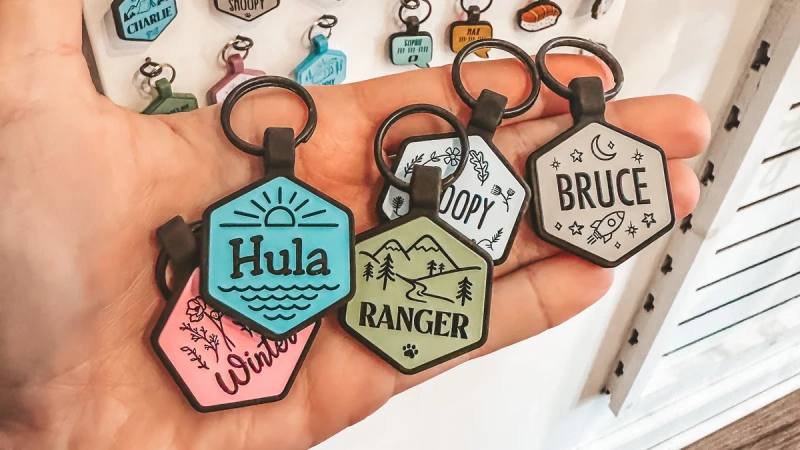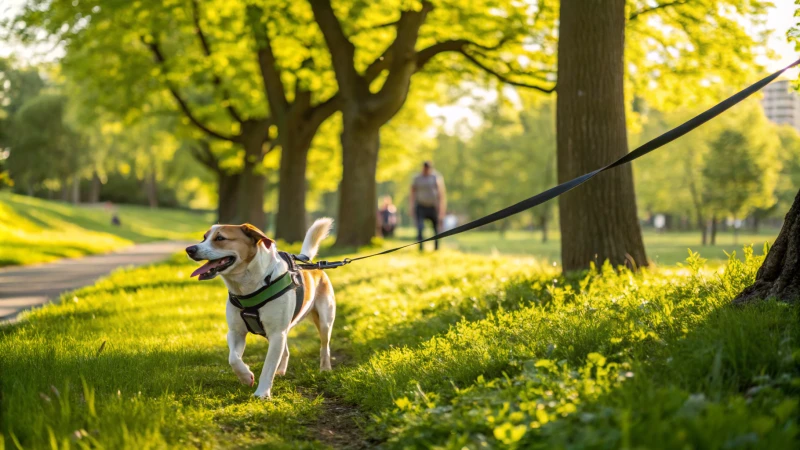
Selecting the right harness for your dog feels like giving them a gentle hug. It feels like saying, "I’m here for you."
A dog harness should fit well to prevent slipping. It should not be too tight to cause pain. One or two fingers should easily slide between the harness and the dog’s body. Comfort and security matter.
The first time I looked for a harness for my furry friend, I felt overwhelmed by the choices. I knew it had to fit perfectly – safe and cozy. Dogs need safety without tightness. The type of harness matters a lot. Front clip or back clip changes how it fits. This really changes things. Walking should always feel fun and exciting, not hard. Adjust the harness until it feels perfect.
A dog harness should allow two fingers to fit underneath.True
This ensures the harness is snug but not too tight, allowing comfort.
All dog harnesses fit the same way regardless of type.False
Different harness types require different fitting techniques for safety.
How Do You Know if Your Dog’s Harness Fits Right?
Have you ever looked for the best harness for your pet, only to feel more confused than your dog’s leash?
A well-fitted dog harness lets you put one or two fingers between the harness and the dog’s skin. This helps keep the dog comfortable and secure. It should never restrict movement or cause chafing. Comfort and safety are very important.
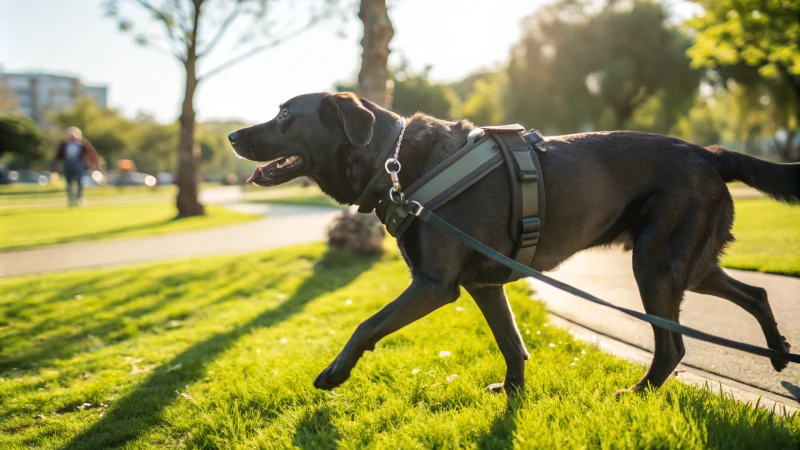
Basic Tips for Dog Harness Fit
I recall my first attempt at fitting a harness on Max, my very enthusiastic Labrador. It felt like buttoning a coat on a wiggly toddler. After some tries, I understood that various designs exist for different needs. For instance, front clip harnesses1 reduce pulling by pressing on the chest, whereas back clip harnesses offer more freedom.
Signs of a Good Fit
- Snugness: Imagine slipping one or two fingers between the harness and your dog’s fluffy fur. This gap brings comfort and security.
- Ease of Movement: Walks should feel easy. If your dog looks like they’re wearing an oversized sweater, the fit might be wrong.
| Sign | What to Check |
|---|---|
| Snug Fit | Can insert one to two fingers |
| Freedom | No signs of restricted movement |
| Adjustability | Customizable straps for a tailored fit |
Importance of Adjustable Straps
Adjustable straps are saviors. Max gained weight after discovering the neighbor’s treats. Adjusting straps stops the harness from slipping or digging in. Avoid discomfort or stress signs like heavy panting or scratching.
Observe your pet for signs of distress2 such as heavy panting or constant scratching.
Mistakes to Avoid
- Too Loose: If your escape artist slips out, tighten those straps!
- Too Tight: If you cannot fit a finger under the strap, loosen it.
Remember these tips and each walk becomes a happy outing for you and your furry friend. For more details on harness types3 and fit tricks, explore some useful guides.
A snug harness allows one finger between strap and dog.False
The correct fit allows one to two fingers, not just one.
Adjustable straps prevent a dog harness from slipping.True
Adjustable straps ensure a secure, custom fit for any dog.
How Can You Adjust a Harness for Growing Dogs?
Adjusting a dog harness isn’t just about fit – it’s about keeping your furry friend comfy and safe as they grow.
Slide two fingers comfortably under the straps. Adjustable features help change the size for a growing dog. Adjust the harness to prevent discomfort or escape. Fit matters for happy dogs.
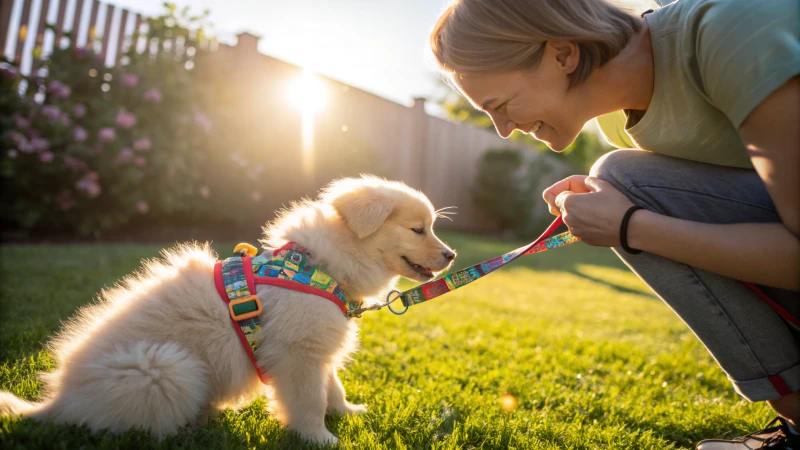
Importance of Regular Fit Checks
I remember bringing my puppy home and feeling amazed at his fast growth! It seemed like his paws grew bigger overnight, and his harness started feeling tight. Checking his harness fit regularly became part of our daily routine, just like feeding and playtime. The harness must be comfortable and work well so your pup stays happy during walks. A well-fitted harness should allow for two fingers to fit under the straps.
Utilizing Adjustable Features
Many harnesses resemble small puzzles with their adjustable straps4. These features become very valuable when your dog enters the awkward phase of growth spurts. I often adjusted those straps to fit my dog’s changing size. Look for harnesses with multiple adjustment points to ensure you can cater to your dog’s evolving body shape.
| Harness Type | Adjustment Points | Ideal For |
|---|---|---|
| Front Clip | Chest, Neck | Training |
| Back Clip | Chest, Belly | Everyday Use |
| Dual Clip | Chest, Back, Belly | Versatility |
Signs of Improper Fit
Nothing feels worse than seeing your pup uncomfortable or trying to escape the harness during a walk! Watch for signs like chafing, restricted movement, or escape attempts. An ill-fitted harness can lead to discomfort or even injury. My dog once slipped out of a loose harness, leading to a chase around the park! Adjust5 as necessary to avoid these issues.
Adapting to Different Harness Types
Understanding different harness types might be tricky but necessary. A front clip harness should reduce pulling without discomfort. Reviewing how each type fits as your dog grows prevents future problems. Regular reviews of how each type fits can prevent problems as your dog grows.
Monitoring Weight and Size Changes
Growth spurts often sneak up on you. One day your dog happily runs through puddles, and the next, the harness is too small. Keep track of your dog’s weight and measurements; sudden weight gain or growth spurts necessitate immediate adjustments. I often measure6 around the chest and neck periodically to ensure the harness size is still suitable.
A well-fitted harness allows two fingers under straps.True
Ensuring two fingers fit under the straps indicates a comfortable fit.
Front clip harnesses are ideal for everyday use.False
Front clip harnesses are primarily used for training, not everyday use.
Which Harness Fits Your Dog’s Breed Best?
Think back to when you got a harness for your dog for the first time, only to see it didn’t fit well. Searching for the ideal harness often feels like a treasure hunt.
Various dog breeds require harnesses suited to their specific size, shape and energy levels. Breeds that pull, like Huskies, benefit from front clip harnesses. Small and medium-sized dogs that love casual walks do best with back clip harnesses.
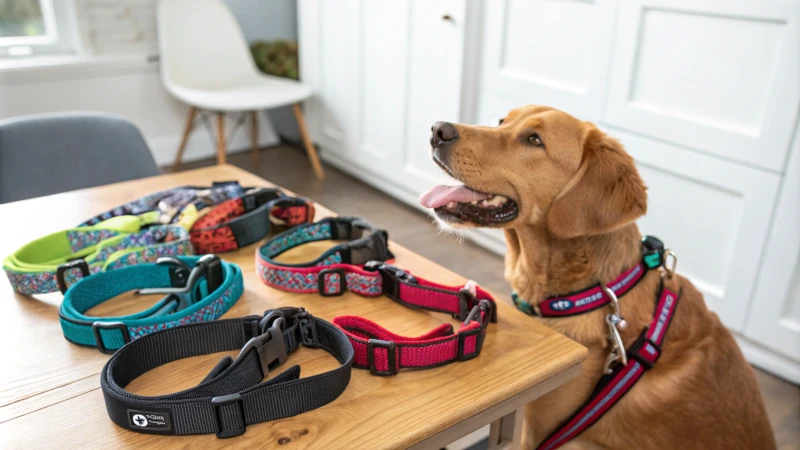
Considerations for Different Breeds
When I looked for a harness for my dog, I found it very important to think about specific breed traits. Consider Greyhounds, for instance. Their deep chests and narrow waists definitely need special adjustments7 for a snug fit. Bulldogs, however, have broad shoulders that need a different kind of harness. I witnessed this problem when my Bulldog felt uncomfortable in an ordinary harness.
Front Clip vs. Back Clip Harnesses
Front Clip Harnesses
These bring big changes if your dog is a Husky or Labrador. Such breeds are known for pulling hard. The harness gently presses on the chest, turning that energy away from the neck.
| Breed | Best Harness Type |
|---|---|
| Husky | Front Clip |
| Labrador | Front Clip |
| Greyhound | Special Fit |
I remember how walks became much easier when I changed to a front clip harness for my lively Lab.
Back Clip Harnesses
Smaller breeds like Pugs and Dachshunds gain easy control with back clip harnesses. They do not disturb their natural walk. My little Dachshund enjoyed them for slow walks.
Harness Styles for Activity Levels
My Border Collie was always very active. A dual clip harness matched his lively lifestyle, bringing versatility for training and walking. For calmer strolls, back clip harnesses8 are good for most small to medium-sized breeds.
- High Activity Breeds: Strong harnesses with several clip points suit them well.
- Leisurely Walkers: Comfortable and simple designs work best.
Customization Options
Some brands offer customizable options which are vital for special sizes or health needs of certain breeds. My Pug needed a custom-fit harness so it wouldn’t press on her sensitive neck. Adjustable straps really helped in finding a fit that grows with her over time, offering long-term comfort9.
Special Needs Harnesses
Occasionally, health issues or injuries mean your dog has special requirements. In these situations, consulting a vet or pet expert becomes a priority to select a specialized harness10 that provides support without limiting movement.
Recognizing all these aspects aids in picking the best harness tailored to your dog’s breed and individual needs, ensuring both comfort and safety during every single walk.
Greyhounds need harnesses with unique adjustments.True
Their deep chests and narrow waists require a secure fit.
Back clip harnesses are best for high activity breeds.False
High activity breeds benefit from dual clip harnesses for versatility.
How Often Should You Check the Fit of Your Dog’s Harness?
Checking your dog’s harness every day is important. This habit really helps with comfort and safety. Dog owners should understand why. Paying attention to the harness is crucial. Little actions can improve comfort greatly.
Check your dog’s harness fit every few weeks. This keeps it snug and comfortable for your pet. The harness adjusts to any changes in your dog’s size or shape.
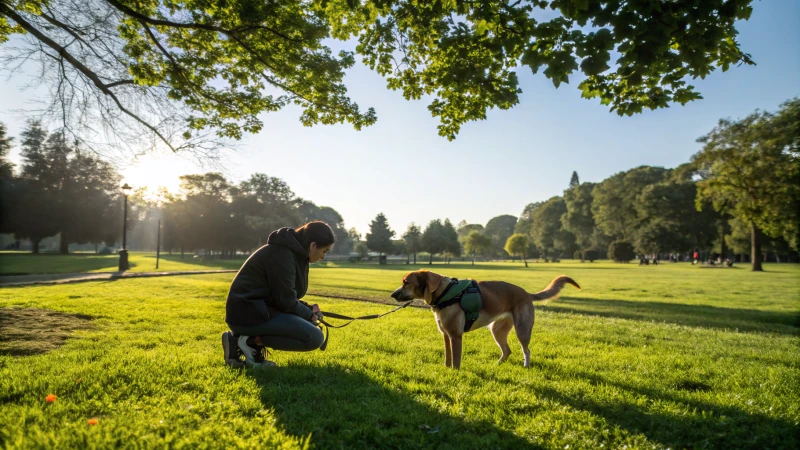
Factors Influencing Harness Checks
Growth and Weight Changes
Puppies grow fast. Once, my puppy grew so quickly, his harness got tight overnight. Checking the fit often is important when they are growing. Adult dogs need checks too. When dogs gain or lose weight, the harness fit changes. It’s really important to notice these changes.
For adult dogs, consider checking the fit if they’ve recently gained or lost weight. Weight changes11 can affect how well a harness fits.
Activity Level
My dog loves playing in the park. His adventures mean his gear gets worn out quickly. Active dogs may have worn-out straps or weak buckles. Watch for these signs to keep things safe.
Active dogs may experience wear and tear on their harnesses more quickly than less active dogs. Inspecting the harness for signs of damage, such as frayed straps or weakened buckles, is essential to maintain safety.
Seasonal Considerations
Seasonal Coat Changes
Seasons change my dog’s coat and the harness fit too. In winter, some breeds get thicker fur. They shed in summer. I check his harness at each season’s start to keep it comfy.
Some breeds develop thicker coats in winter and shed in summer. These changes can alter how a harness fits. Check the fit at the start of each season to ensure it remains comfortable.
Temperature and Swelling
In hot weather, dogs swell like people. I watch the harness more in summer to avoid pinching or discomfort.
Heat can cause swelling, altering your dog’s usual harness size. In hot weather, check the harness fit more frequently to ensure it’s not too tight, causing discomfort.
Quick Check Guide
I include a check with his grooming. This practice keeps the harness working well and my dog comfortable.
Remember the two-finger rule: slide two fingers between the harness and your dog’s body without squeezing. This small check is very important.
| Scenario | Check Frequency |
|---|---|
| Puppy Growth | Every 1-2 weeks |
| Adult Dog Weight Changes | Every month |
| High Activity Level | Weekly visual inspection |
| Seasonal Coat Changes | Start of each season |
| Hot Weather | Every few days |
Utilizing a regular check schedule12 helps in maintaining the harness’s effectiveness and your dog’s comfort.
Puppy harness fit should be checked every 1-2 weeks.True
Puppies grow quickly, needing frequent fit checks to ensure comfort.
Adult dogs need harness checks only twice a year.False
Harness fit should be checked monthly for adult dogs with weight changes.
Conclusion
A properly fitted dog harness should allow one to two fingers between the harness and the dog’s body, ensuring comfort and security while preventing escape or injury during walks.
-
Learn about various harness types to select the one that best suits your dog’s behavior and walking style. ↩
-
Understand distress signs to ensure your dog remains comfortable and safe in its harness. ↩
-
Find comprehensive guides on selecting the right harness for your dog, considering size, behavior, and breed. ↩
-
Learn how to correctly use adjustable straps on various harness types for optimal fit and comfort. ↩
-
Identify key signs that your dog’s harness may need adjustment to prevent discomfort or injury. ↩
-
Discover the best methods for measuring your dog’s size to ensure the correct harness fit. ↩
-
Discover harness options specifically designed for Greyhounds’ unique body shapes, ensuring comfort and safety. ↩
-
Explore the advantages of using back clip harnesses for smaller dogs who require gentle control. ↩
-
Learn how adjustable harnesses can adapt to your growing dog, providing continuous comfort. ↩
-
Find specialized harness solutions for dogs with health concerns or unique physical needs. ↩
-
Understanding how weight changes affect fit ensures your dog remains comfortable and safe. ↩
-
Establishing a routine for checks helps maintain equipment effectiveness and dog safety. ↩


